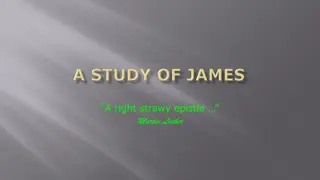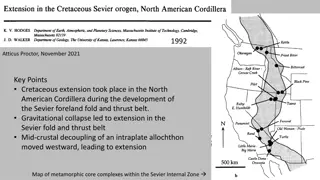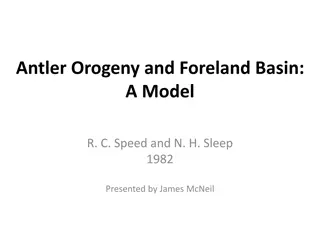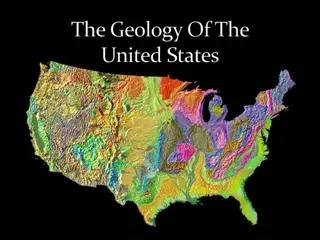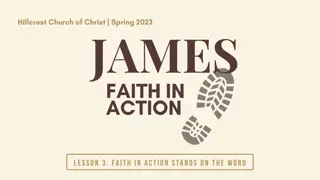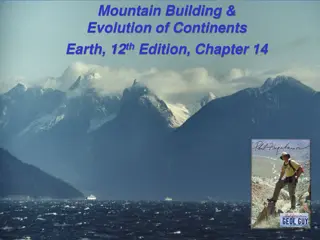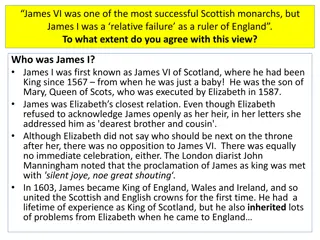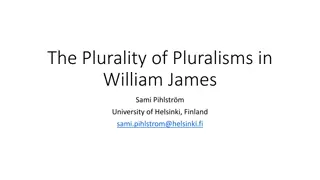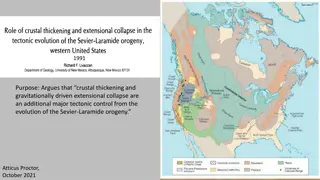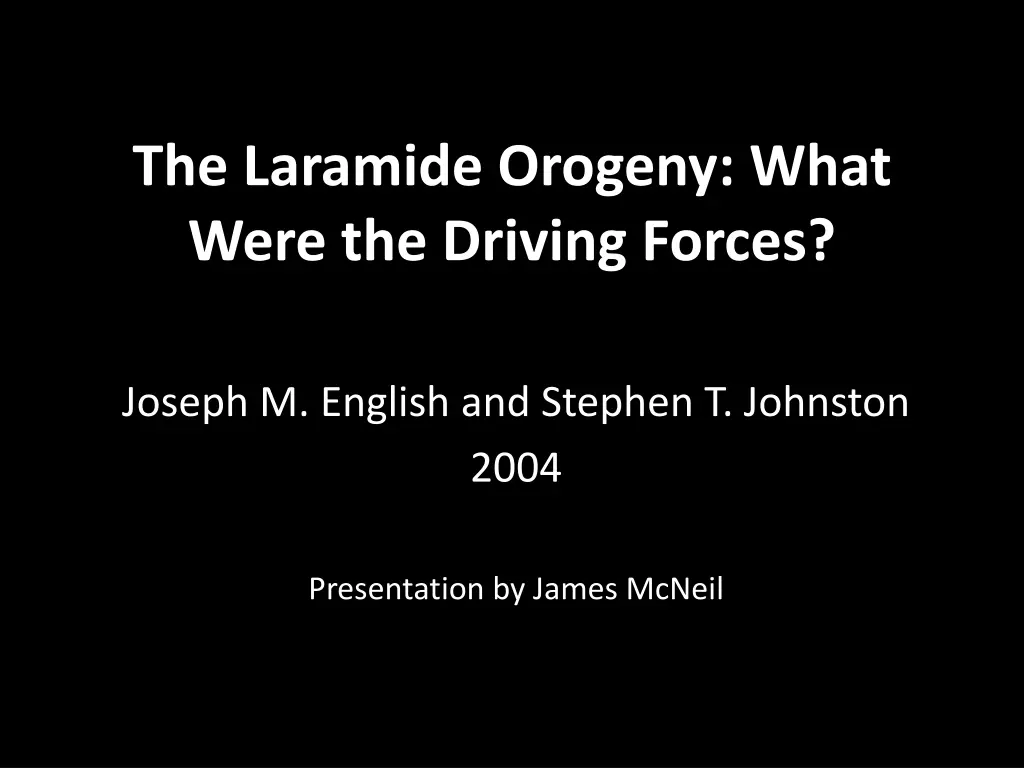
Exploring the Forces Behind the Laramide Orogeny
Delve into the Late Cretaceous to Paleocene Laramide Orogeny, investigating proposed mechanisms such as retroarc thrusting, orogenic float tectonics, flat-slab subduction, and more. Discover the enigmatic processes shaping this geological event, from continental collisions to subduction dynamics.
Download Presentation

Please find below an Image/Link to download the presentation.
The content on the website is provided AS IS for your information and personal use only. It may not be sold, licensed, or shared on other websites without obtaining consent from the author. If you encounter any issues during the download, it is possible that the publisher has removed the file from their server.
You are allowed to download the files provided on this website for personal or commercial use, subject to the condition that they are used lawfully. All files are the property of their respective owners.
The content on the website is provided AS IS for your information and personal use only. It may not be sold, licensed, or shared on other websites without obtaining consent from the author.
E N D
Presentation Transcript
The Laramide Orogeny: What Were the Driving Forces? Joseph M. English and Stephen T. Johnston 2004 Presentation by James McNeil
Introduction Laramide Orogeny Late Cretaceous to Paleocene (80-55 Ma) thin-skinned fold-and-thrust belt and thick-skinned block uplifts Laramide block uplifts in the US Rocky Mountain fold and-thrust belt in Canada and US Sierra Madre Oriental fold-and-thrust belt in east-central Mexico Deformation belt developed 700-1500 km inland of plate margin This paper: A review of proposed mechanisms for producing observed Laramide deformation The processes responsible for orgoeny remain enigmatic Proposed mechanisms: Retroarc thrusting Orogenic float tectonics Flat-slab subduction Cordilleran transpressional collision
Retroarc Thrusting (Price, 1981) The rate of western advancement of NA plate exceeds the rate of slab rollback The continent collides with the oceanic slab because it is unable to override the slab Continental-scale mechanism Variations in deformational style along strike could be produced by variations in crustal heterogeneity Stress in the upper plate must be distributed across the entire Cordillera without causing significant deformation within orogen Model doesn t explain how shortening is accommodated in the mantle lithosphere
Orogenic Float Tectonics (Oldow et al., 1990) Faults in the foreland are linked to a collision zone at the plate boundary by a major deep- crustal basal detachment Entire crustal section floats on the underlying lithosphere No development of a lithospheric root No present driving force exists to apply a horizontal compressive stress above the proposed deep-crustal basal detachment This model does not fit with the Laramide orogeny
Flat-Slab Subduction (Coney and Reynolds, 1977; Dickinson and Snyder, 1978; Bird, 1988) Oceanic subducting slab along western margin of North America remains in contact with the overriding plate >700 km inboard of the trench Was proposed to have be formed due to subduction of the Kula-Farallon spreading center, or a buoyant oceanic plateau Fold-and-thrust belt in Canada and Mexico must be attributed to some other process because of the presence of a magmatic arc within 300 km of the trench during the Laramide Synchronous orogen-wide contractional deformation but different regional processes?
Cordilleran Transpressional Collision Paleomagnetic studies of Cretaceous layered sedimentary and volcanic rocks within the orogen suggest that the Canadian Cordillera originated 2000-3000 km to the south between 85-55 Ma Laramide possibly occurred in response to a right-lateral transpressional collision between North America and a north-migrating ribbon continent Possible offscraping of passive margin sediments during northward translation of ribbon continent Absence of an inner Late Cretaceous magmatic arc sheds doubt on this model
Discussion Jarrard (1986) proposed four variables that determine the strain regime of the overriding plate at a converging margin Convergence rate Slab age Intermediate slab dip- average dip to 100 km Absolute motion of the upper plate Unlikely that slab age, slab dip, or convergence rate were principle driving forces Post-Laramide extension cannot be responsible for the location of the inland (700-1500 km) orogenic belt Spreading rates weren t abnormally high during Laramide
Discussion Take home point: None of the proposed mechanisms for Laramide orogenesis explain the geometry, timing, or extent of the inboard continental scale orogeny. 3 questions: 1. Are the paleomagnetic data implying northward translation correct, and if so, how expansive was the Cordilleran entity that underwent >2000 km of northward translation during Laramide time?
Discussion Take home point: None of the proposed mechanisms for Laramide orogenesis explain the geometry, timing, or extent of the inboard continental scale orogeny. 3 questions: 2. What was the relationship between northward translation, dextral transpression, and fold-and- thrust belt formation? Does the fold-and-thrust belt represent the product of a collisional event following the closure of an intervening ocean basin, or does the fold and thrust belt root into an oblique dextral system that assisted in accommodating northward translation?
Discussion Take home point: None of the proposed mechanisms for Laramide orogenesis explain the geometry, timing, or extent of the inboard continental scale orogeny. 3 questions: 3. Why did the Laramide strain zone form so far inboard (~1000 km) of the inferred plate boundary along the entire length of the continent?


